Maritime painter Alex Colville (1920–2013) produced this early work while he served as an official war artist in the Second World War. Having gone straight from being a student at Mount Allison University in Sackville, New Brunswick, to joining the army, Colville did not think that his production during the war years really reflected his eventual development as an artist. He has been widely quoted as feeling that he didn’t make his first mature work until 1950, four years after painting this image from sketches completed in 1945. However, this painting foreshadows many concerns seen in his more mature work.
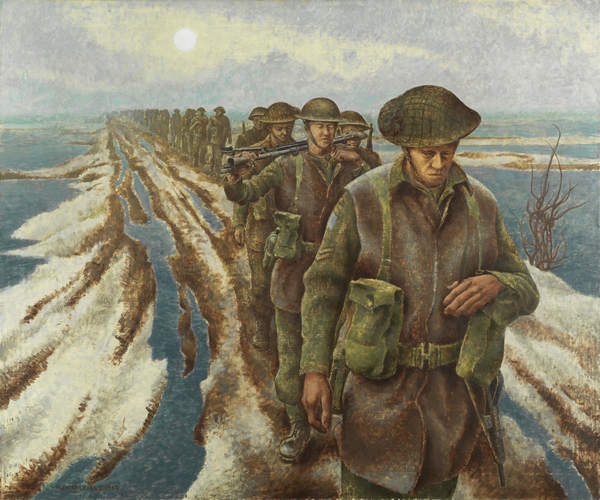
Oil on canvas, 101.6 x 121.9 cm, Beaverbrook Collection of War Art, Canadian War Museum, Ottawa
The composition, for instance, reflects the geometric obsessions of Colville’s later work, with a strong diagonal form cutting across the canvas, from upper left to lower right of the picture plane. Canadian soldiers walking through the mire of the Scheldt estuary in Holland are depicted as a series of plodding figures receding into the background, their collective weight seeming to push the figure in the foreground from his position in the lower right-hand corner out into our view.
The technique breaks up the rigid geometry of the composition, introducing an element of softness to the hard lines that underlie all of Colville’s images. While this work lacks the drama of Horse and Train, 1954, and others of the 1950s, it contains the seeds of Colville’s concern with the place of humans in a shattered world. These figures proceed by force of will—set in motion by the orders of others but sustained only through their own individual agency.
This Spotlight is excerpted from Alex Colville: Life & Work by Ray Cronin.
 Stitching the Archives
Stitching the Archives
 A Working-Class Hero
A Working-Class Hero
 Imagining Entangled Futures
Imagining Entangled Futures
 Bridging Far and Near
Bridging Far and Near
 Soft Power
Soft Power
 Imagining Emancipation
Imagining Emancipation
 A Priceless Portrait
A Priceless Portrait
 Meditation in Monochrome
Meditation in Monochrome
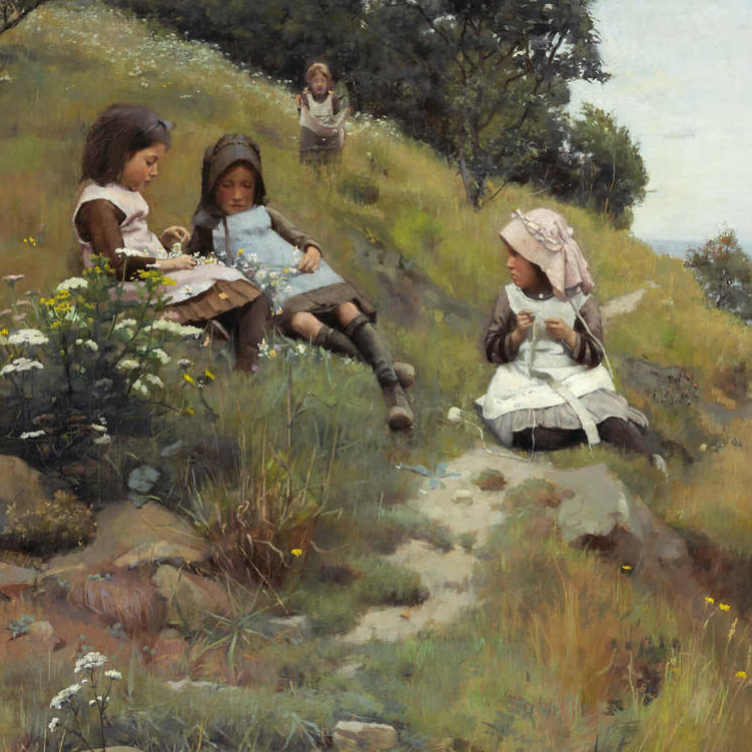 Making His Mark
Making His Mark
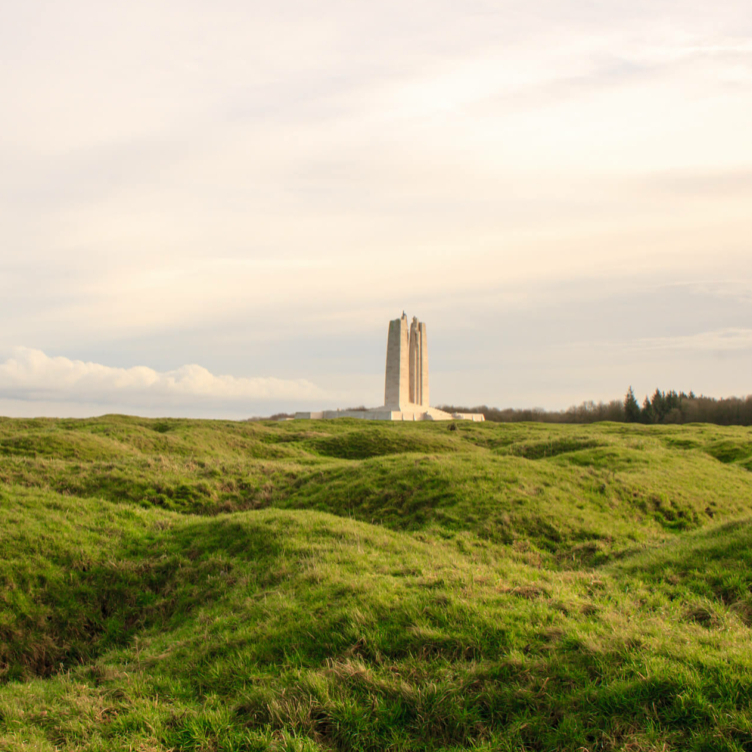 Honour and Sacrifice
Honour and Sacrifice
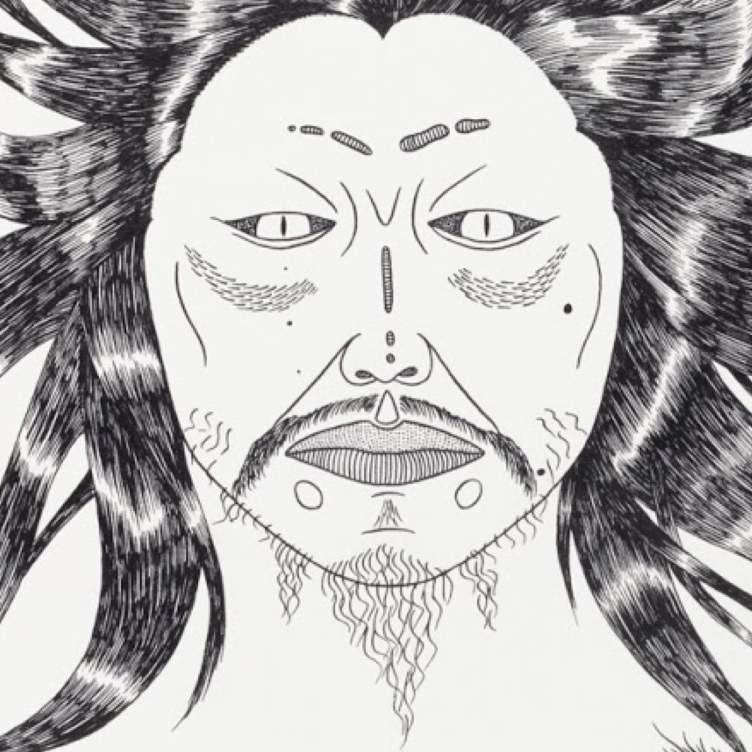 A Monstrous Vision
A Monstrous Vision
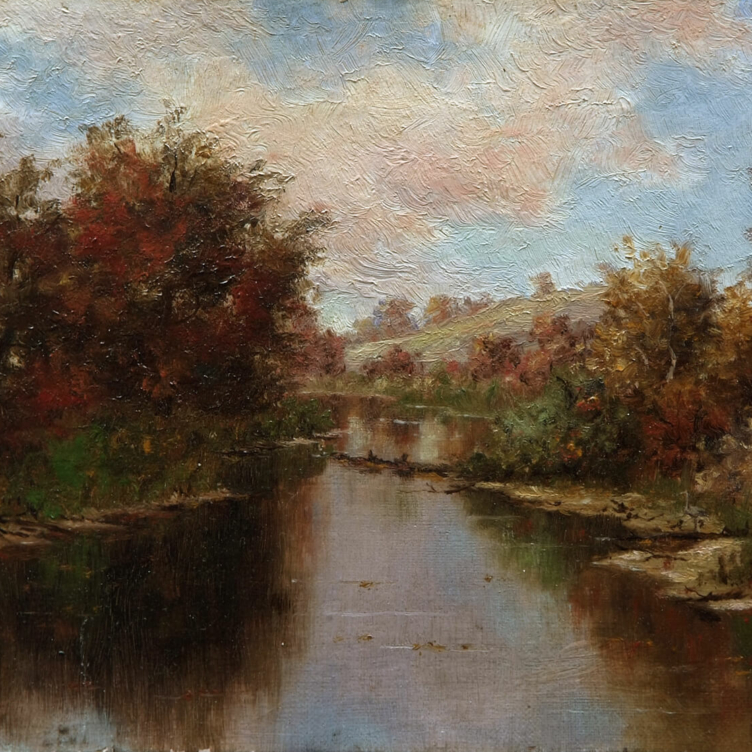 Remote Beauty
Remote Beauty
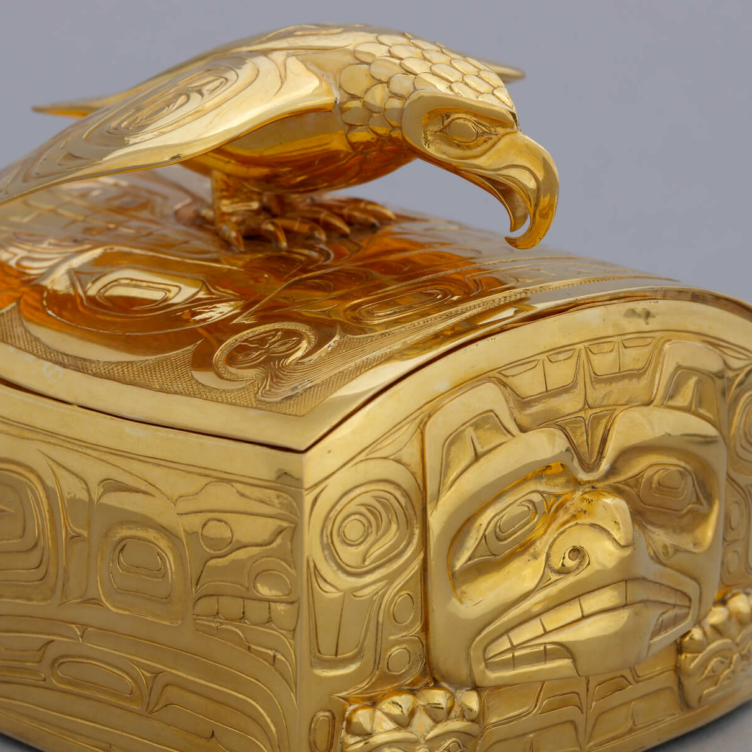 Pride and Resistance
Pride and Resistance
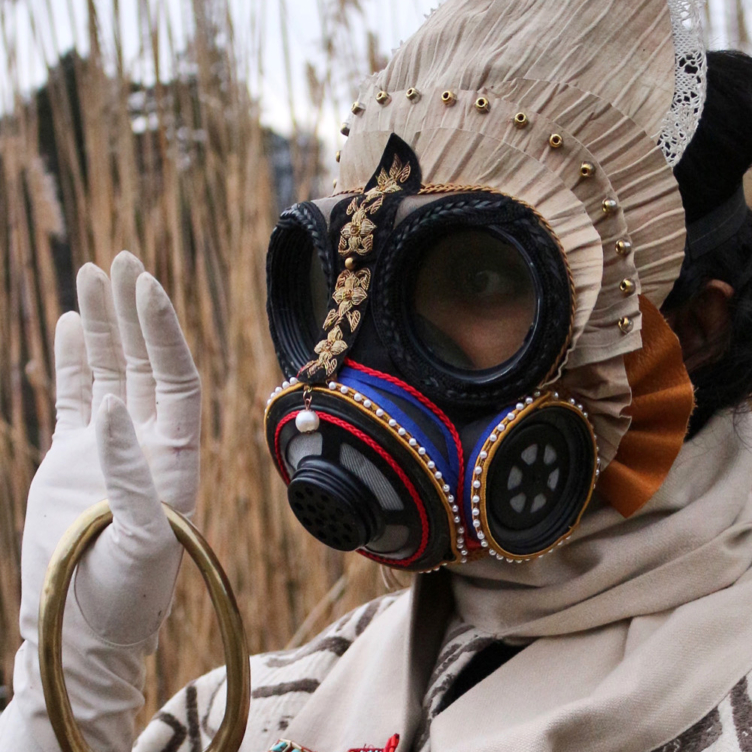 Dressed for Danger
Dressed for Danger
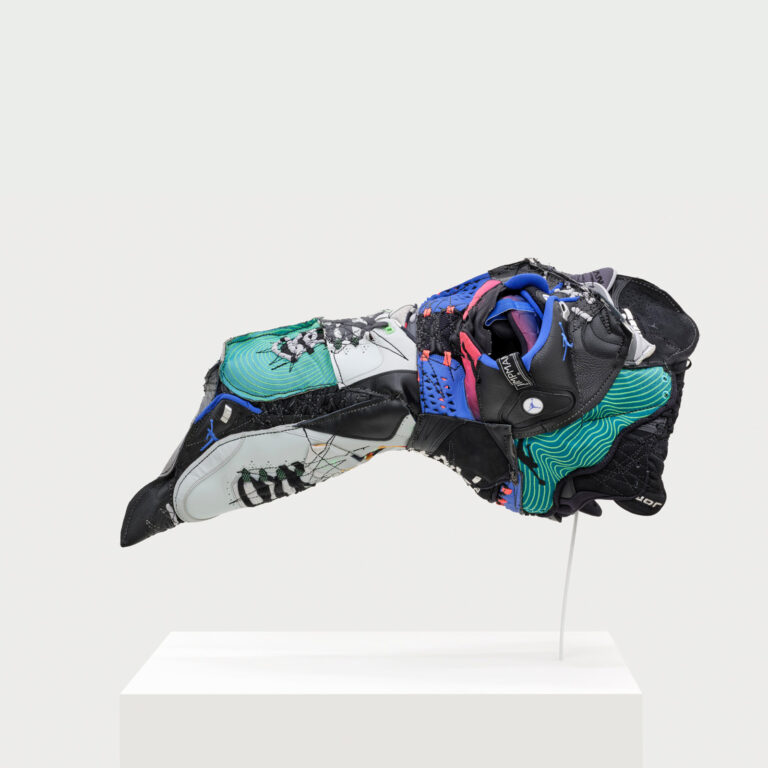 Masks from the Past
Masks from the Past
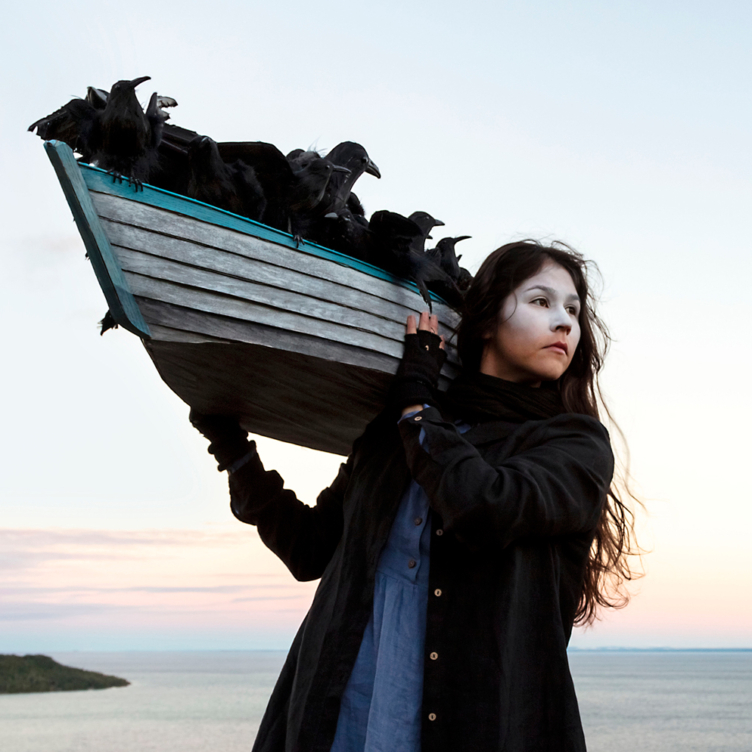 Lessons from the Land
Lessons from the Land
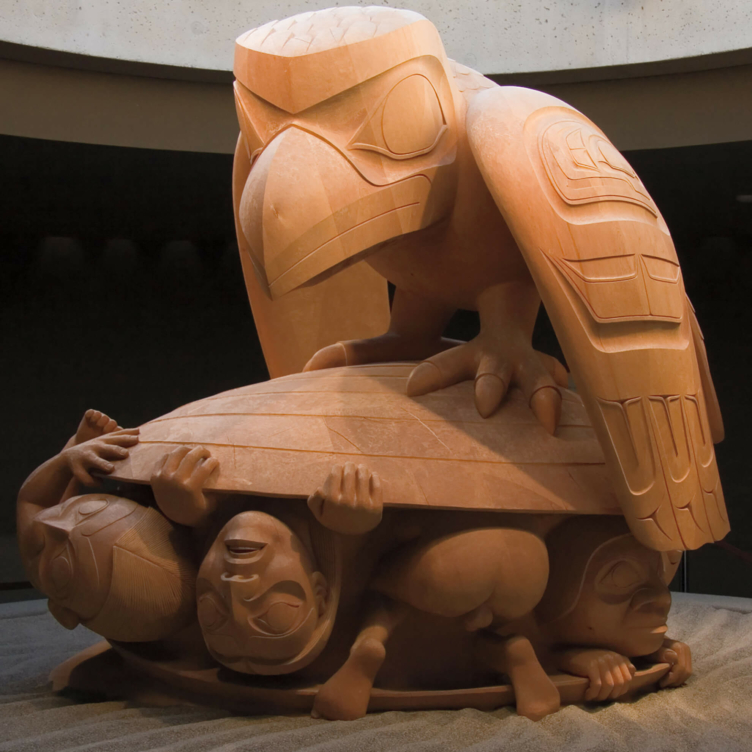 A Cultural Hero
A Cultural Hero
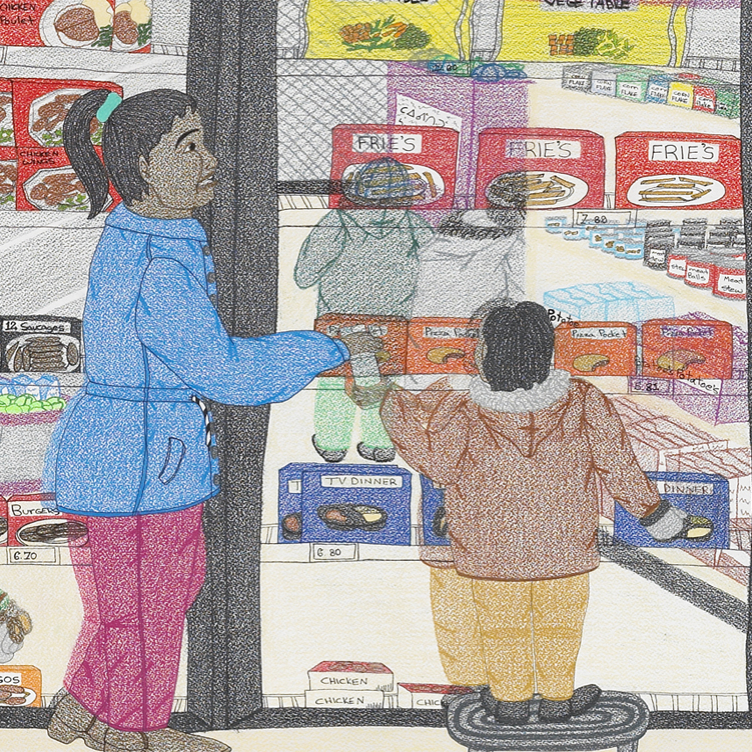 Food for Thought
Food for Thought
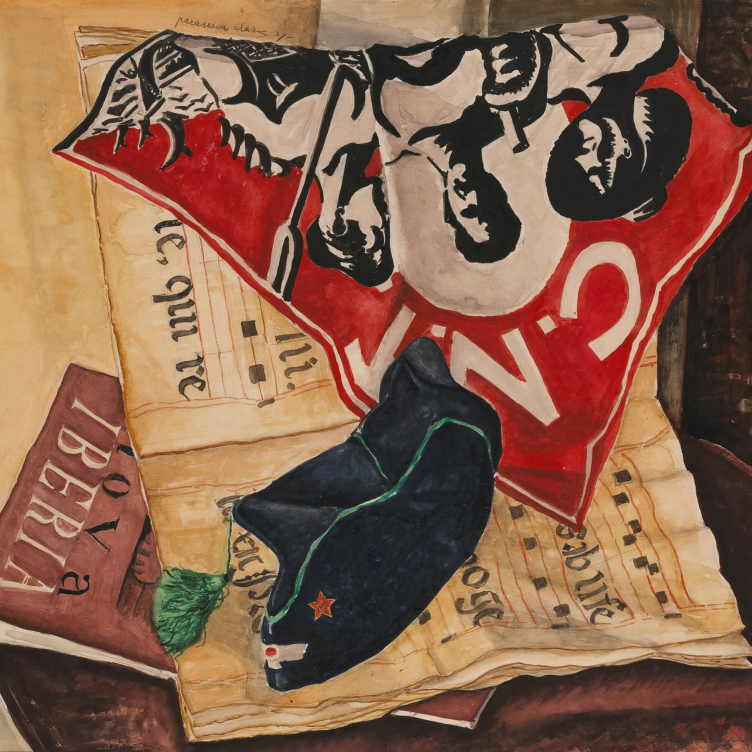 A Passion for Activism
A Passion for Activism
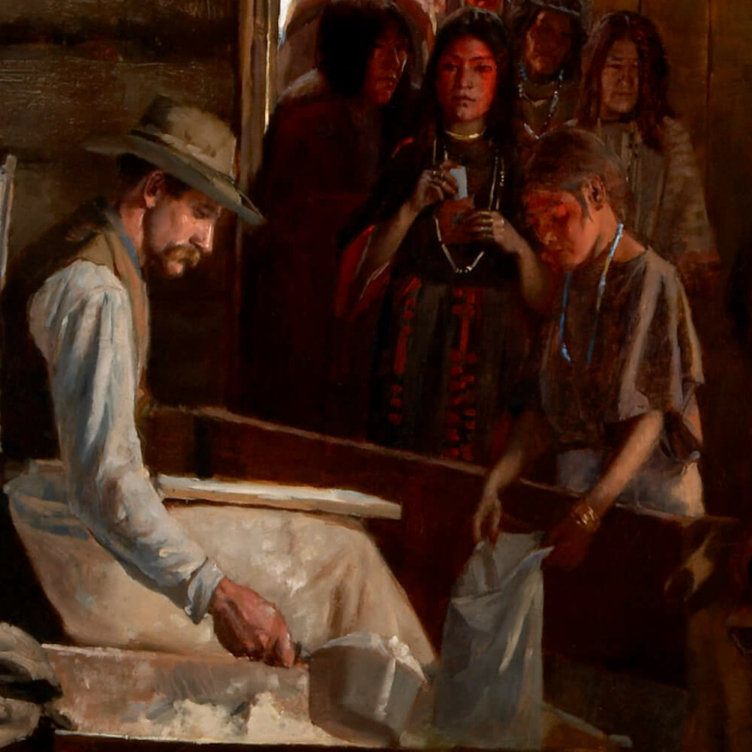 Starvation and Scandal
Starvation and Scandal